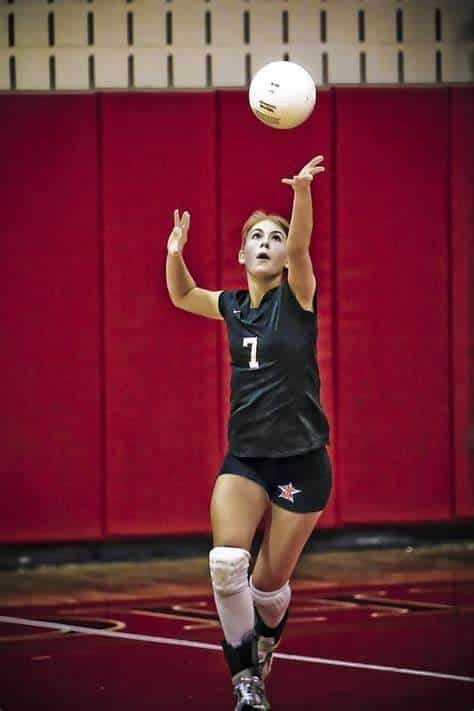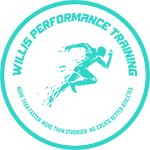
When it comes to sports, especially those that involve a lot of overhead movement, a strong core is essential. It may not be the first muscle group that comes to mind when you hear the term “overhead athlete,” but weak core can have something like a butterfly effect throughout the rest of the kinetic chain, specifically the shoulders for overhead athletes. In this blog post, we’ll talk about the basic functions of the core during movements, and how core integrity, or lack thereof, manifests proximally.
Overhead athletes, such as volleyball players, baseball pitchers, and tennis players, rely heavily on their shoulder muscles for their respective sports. However, if the core muscles are weak and not coupling properly, then the shoulders actually have to work harder to compensate for the lack of strength For example, during rotation, if the trunk rotators are not strong enough past a certain range, then to make up for that reduced range, the shoulder would have to overextend to articulate the desired velocity the athlete is trying to achieve while throwing a ball, or serving a volleyball.
Understanding Core Function
In order to better understand the interaction between the core and the rest of the body, it’s important grasp how the “core” actually functions.
Firstly, the trunk can flex forward, flex laterally, rotate, and extend. Every single muscle in the core is involved in each of these movements to a degree.
It is also important to note the different types of core muscles, and what functions they have:
You have the local stabilizer muscles, which are smaller in size and attach directly to the spine, and you have the global movers, like the transverse abdominals, obliques etc. that create the actual movement.
The role of the stabilizers is to isometrically contract and create rigidness around the spine as movement occurs. If the stabilizers are weak, then this makes it more difficult for the larger muscles to generate the necessary forces for efficient movement, including rotation.
In these instances, this is where overcompensation begins to occur in more proximal areas such as the shoulder.
Not only do the core muscles have to be strong and maintain that strength during rotational movement, but they also have to contract at the correct times during that movement. Weak stabilizers or global movers of the core that can’t contract appropriately will cause disfunction throughout the kinetic chain.
What Does this Mean For Overhead Athletes
For athletes such as volleyball players, softball/baseball, quarterbacks, even swimmers, the implications of a weak core lay the foundation for setbacks in performance. While there definitely needs to be solid strength integrity at and around the shoulder joints, many athletes fail to truly strengthen the core musculature that will ultimately enhance performance, via alleviation of the shoulder joints.
For athletes in sports that involve a good amount of throwing, whether that be throwing a ball, or using a specialized tool to throw a ball such as lacrosse, the trunk becomes crucial in not only generating the power for faster throwing, but also “winding” for the throw, as well as the ability to do it repetitively with quality season after season.
Consider a volleyball athlete gearing up for a serve. The move itself requires jumping, trunk extension, trunk rotation in both directions, extreme shoulder extension, and rapid flexion, all while making sure to time those movements accordingly to hit the ball with maximal power and accuracy.
If the core is not able to withstand the strong forces that occur throughout the motion, then this could potentially overload the shoulder, leading to an overuse, sometimes acute injury.
The body’s answer to weak musculature? Recruiting other muscles to make up for what is needed to deliver the desired goal. A core with strong stabilizers and global movers alleviates the shoulder, as it is now more geared to generate, absorb, and redirect the rotational forces.
Reversal Strength at the Core
A concept that is also overlooked is the demand on the trunk rotators to STOP rotation.
Referencing the volleyball serve once again, the “winding” up portion of that serve represents a rapid rotation in one direction that must be quickly decelerated into the opposite direction. That ability to stop, and absorb a high force, in this case rotational, we can term reversal strength. This is also termed eccentric strength.
Training the core to be strong isometrically at different positions is another crucial component to not just the concentric part (the serve) of the motion, but also the redirection (the wind up). Thus if the core can not sustain the eccentric forces, then output is lower and other areas get recruited.
Training the Core Appropriately for Overhead Athletes
Now that you have a better understanding of the core functions, then training concepts can be more clear. Here are a few things to remember when training the core:
Increase strength through isometric work via each of the core’s movement directions; extension, flexion, rotation. This sets the base for not only strengthening the stabilizers, but also the ability to absorb, redirection, and maintain posture throughout movement. One tool we utilize heavily with our athletes and clients to do this is the Kiro Core Harness.
Just like any other muscle in the body, the core goes through 3 phases of movement ; eccentric, amortization, and concentric. Try working EACH of these into your training routine to maximize throwing potential.
Explore outside of the norm. While sit ups, planks, a bicycles have there place, there are more optimal exercises for “core strength”.
Overall, it’s clear that overhead athletes need a strong core to reduce shoulder injuries and increase rotational ability, leading to better performance. We know that having a strong trunk will lead to not only better shoulder performance, but also overall strength and power increases, which are also important components of any sport. If you’d like to get started on improving your core strength right away, consider signing up for a free trial session with us! Our team can provide individualized coaching based on your specific needs and abilities so that you can perform at your peak level. Ultimately, having strong core muscles is essential for keeping you healthy and injury-free as an overhead athlete – let us help you reach your fullest athletic potential.
